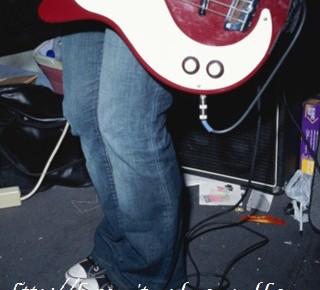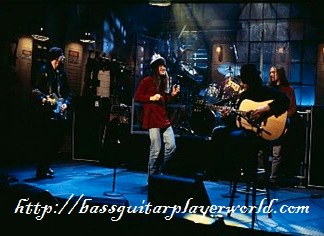Using Arpeggio Licks in Bass Runs In a Proper Manner
 Breaking up chords may seem like a bad idea. Chords are supposed to be our prime song writing tools, and thus it would seem obvious that we should want to keep them intact.
Breaking up chords may seem like a bad idea. Chords are supposed to be our prime song writing tools, and thus it would seem obvious that we should want to keep them intact.
In this article, we will talk about the benefits of breaking up chords. In fact, once you break up one chord, you may find it hard to resist breaking up all the chords you know just to hear what they sound like.
What is An Arpeggio?
First off, we should talk about what breaking up a chord actually does. Breaking up a chord and playing it note by note creates something called an arpeggio. Arpeggios are great tools for both solos and riffs. They can be played fast or slow, and they can be swept if you use a pick, or fingered if you use a fingering technique.
Adding an arpeggio to a riff is much simpler than adding one to a lick. In most cases, all you have to do is break the current chord within the progression up and play it note by note.
Time to Display Your Fingerwork on the Fretboard
Adding arpeggios in bass runs is a bit different. When you are writing a lick, chances are you are using a certain scale to write the lick. For the most part, this helps to limit the amounts of crazy arpeggios that you can construct. This is a good thing, as many musicians tend to get themselves swept up in the moment and carried away by the vast amount of possible notes and combinations of notes.
If you are playing a lick in C Major, for instance, you arpeggio is limited to the notes C, D, E, F, G, A, and B. Playing any accidental notes (sharpened notes or flatted notes) will take you outside of the C Major scale and bring you towards chromatic scales. For this lesson, we are going to keep within the bounds of a given scale. Of course, once you start creating your own arpeggios, you can add whatever notes you like.
Putting Your Theory Knowledge to Good Use

If you are playing a C Major arpeggio, you have the option to play any given chord within the C Major scale. For example purposes, we will use the tonic triad of C, E, and G. To add notes to this arpeggio, we need to look at the properties of the chord. We have a root, a third, and a fifth –the basic foundations of any chord. We have two intervals at play; the major third and the minor third.
All of this gives us an overall interval of a perfect fifth. This limits the types of notes we can add, as we want to keep the original chord properties while still changing the feel. We can add octaves to keep the chord the same, or we can add other intervals to further expand the chord. For instance, if we add an interval of a major third, bringing us to B, we turn this triad arpeggio into a seventh chord arpeggio.
The only way to know for sure what works and what doesn’t is to experiment. When you are practicing building arpeggios, make it part of your goal to practice adding notes to arpeggios to change their qualities. Have fun, and keep an open mind and ear.
Transform Yourself From An Average Player Into a Competent Bassist
JamPlay has thousands of video lessons that are conveniently arranged in structured lesson sets. With high quality instructions from world renowned bassists, Jamplay is an unparalleled learning resource. Whatever your genre preferences, you’ll find something here to help you improve your current level of playing.
Related Articles
Comments are closed.





